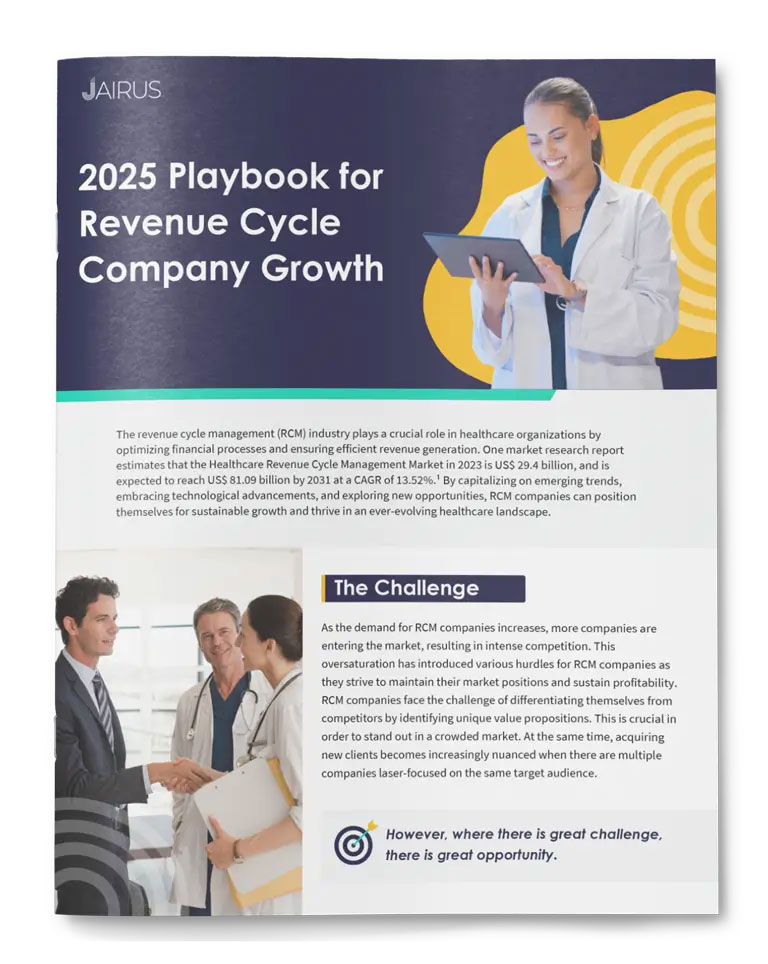Sales and marketing misalignment drains revenue from MedTech companies. Leads go cold, messaging gets muddled, and potential buyers lose interest before a deal can even take shape. Without a unified customer relationship management (CRM) software, teams operate in silos, leads slip through the cracks, messaging becomes inconsistent, and potential buyers disengage before a deal ever has a chance to close.
Fixing this issue requires integrating sales and marketing into a single system that provides shared visibility, clear lead handoff processes, and automation to streamline engagement.
The High Cost of Sales and Marketing Silos
Leads frequently fall through the cracks when sales lack access to marketing data. The challenge has intensified because the number of decision-makers involved in purchases has expanded. While clinical stakeholders still play a role, finance, IT, and operations now have significantly more influence over buying decisions. A CRM must track engagement across all of these stakeholders, ensuring sales teams are targeting the right people at the right time with the right message. A CRM that only tracks physician interactions is incomplete. Sales need full visibility into engagement across the entire buying committee.
Without a shared CRM, marketing may send leads that sales dismiss as unqualified, while sales misses opportunities because they lack insight into prior engagement. This results in wasted efforts on both sides and frustration across teams.
Misaligned Goals Create Friction
Marketing and sales are often running different races. Marketing focuses on lead volume, engagement rates, and MQLs, while sales cares about closing deals and revenue. When these teams work from separate data sources, they optimize for different outcomes, creating friction that slows progress.
Additionally, this misalignment impacts the customer experience. When marketing and sales don’t have a shared system, prospects receive conflicting messaging, inconsistent follow-ups, or redundant outreach. This erodes trust and makes conversion more difficult.
How a Unified CRM Solves These Challenges
A unified CRM removes the chaos. It connects sales and marketing with a shared system that tracks every interaction, giving both teams a clear view of where each lead stands.
By creating a single source of truth for customer data, both teams can track interactions, engagement history, and lead progression in real time. Sales can see what content a prospect has engaged with before reaching out, while marketing can prioritize nurturing campaigns based on prospect behavior.
Seamless data flow between systems ensures marketing automation and CRM tools work together.
Commonly, prospects will visit a company’s site and download relevant content after an initial sales call. In a siloed environment, the sales professional is unaware of this strong buying signal. However, by leveraging a unified CRM, it is possible to flag this activity for the seller, increasing the likelihood of winning the business.
Adapting to the New MedTech Sales Landscape
Medical and pharma-related trade show attendance is down 35% from pre-pandemic levels.1 Facility access systems and rep credentialing barriers have made it increasingly difficult for sales teams to meet with prospects in person. Sales reps now have to think more like marketers—proactively reaching out to prospects instead of relying on chance meetings at the scrub sink. A CRM must support this shift by integrating with digital tools to track engagement and prioritize proactive outreach.
In a digital-first MedTech environment where leads are engaging with a company’s assets outside of sales calls, a CRM must integrate with digital tools to track email engagement, webinar attendance, and LinkedIn interactions, in turn giving sales teams visibility into digital buying signals. This helps reps engage prospects strategically instead of relying on outdated cold outreach methods. Leads are automatically tracked, scored, and nurtured, while sales receive timely alerts when a lead is ready for outreach. This removes the guesswork and improves efficiency.
Marketing to Sales Lead Handoff
A structured lead qualification and handoff process aligns both teams. With fewer face-to-face interactions, sales reps need CRM insights that show how a prospect has engaged with content — whether they’ve watched a product demo, downloaded a white paper, or interacted with a webinar. A CRM is no longer just a sales tool; it’s a full-funnel engagement system that helps teams connect with decision-makers at the right time. Sales and marketing must define and be aligned on what constitutes a qualified lead, implement lead scoring models, and establish clear transition points. This prevents premature handoffs that waste sales resources and ensures marketing isn’t focused on leads that will never convert.
Implementation of a Unified CRM Strategy
Implementing a unified CRM strategy starts with involving both teams in system selection and setup. Sales and marketing must collaborate to choose a CRM that meets their needs, integrates with existing tools, and provides shared reporting.
Ongoing communication and feedback loops help refine the strategy over time. Regular meetings allow both teams to evaluate lead performance, adjust qualification criteria, and optimize engagement tactics based on data-driven insights.
Automation plays a critical role in sustaining CRM adoption. Automated lead-nurturing sequences, personalized outreach, and real-time engagement tracking remove manual effort while improving responsiveness and conversion rates.
Common Mistakes that Undermine CRM Success
Even with the right CRM strategy, common mistakes can undermine success.
- Lack of adoption by sales and marketing teams: If the CRM is not integrated into daily workflows or is perceived as cumbersome, teams will revert to outdated methods, leading to fragmented data and missed opportunities. Ongoing training and leadership buy-in are necessary to drive adoption.
- Persistent data silos: If marketing automation, sales outreach, and customer support tools remain disconnected, information is still lost. Every relevant system must sync to maintain a complete customer view.
- Unclear roles and responsibilities: Without accountability, CRM data becomes outdated, messy, and unreliable. Assigning dedicated owners to maintain data accuracy and lead handoff processes keeps everything running smoothly. Often this is the sales operations department in some larger organizations, but may be the head of sales or marketing in smaller ones.
Key Actions for MedTech Companies to Achieve a Unified CRM
MedTech companies looking to bridge the sales-marketing gap should focus on a few key actions.
- Align both teams around shared KPIs that prioritize revenue impact over vanity metrics. Leads, engagement, and conversions should all be tracked with a focus on how they contribute to revenue.
- Leverage CRM automation to improve marketing-sales connectivity. Lead scoring, triggered outreach, and behavior-based engagement ensure leads are always followed up with at the right time.
- Invest in ongoing training and collaboration sessions. Sales and marketing should work together to review data, refine targeting strategies, and continuously improve how they interact with prospects.
Selecting the Right MedTech CRM
Choosing the right CRM platform is critical. Historically, Salesforce.com has been the dominant CRM in MedTech, but it has fallen behind HubSpot in recent years. Unlike Salesforce and its MarketingCloud, HubSpot provides a seamlessly integrated system that gives both sales and marketing a single, consistent view of a prospect. Sales can see what marketing is doing, and marketing can track sales activity, eliminating gaps and miscommunication. The system should be intuitive, integrate well with existing tools, and provide transparency across both teams.
Sales and marketing silos don’t just slow things down—they actively kill revenue. When teams don’t work together, opportunities slip away, deals stall, and the competition wins. If sales and marketing aren’t working from the same data, it’s time to fix that. A unified CRM isn’t just a tool – it’s the foundation for scalable growth. The longer these inefficiencies persist, the harder it becomes to scale revenue growth.
Now is the time to rethink how your teams collaborate to drive business forward.
Ready to Align Sales and Marketing for Faster Growth?
If your MedTech company is struggling with disconnected sales and marketing efforts, a unified CRM strategy is the answer. Let’s talk about how Jairus can help your company close more deals, increase efficiency, and maximize revenue.
Schedule a CRM strategy consultation today!
Sources
- Bethke T. Trade Show Attendance Still 20% Below Pre-Pandemic Levels: 2023 Data Study. PromoLeaf. Published October 5, 2023. Accessed April 9, 2025. https://www.promoleaf.com/blog/trade-shows-post-pandemic?srsltid=AfmBOora2Gp4ZO-AfZ-OaKlpBYaRDtMVSrsTxWzeINYSXjH8hzzxQepX


